The exoskeleton is a protective system for animals. The layman often refers to the exoskeleton as a shell. The exoskeleton provides joint flexibility for underlying muscles. The joint and muscle function allows a range of movement for the animal. There are a variety of insects, crustaceans, and mollusks with exoskeletons.
Exoskeleton vs. Endoskeleton
Both the exoskeleton and endoskeleton are bone structures that grow with the body. Endoskeletons are on the inside of an animal. Mammals have endoskeletons.
An exoskeleton develops around the animal’s external frame. For invertebrates, the shell consists of proteins, minerals, and carbohydrates. The exoskeleton of mollusks is a calcium carbonate shell.
With the endoskeleton, the skeleton provides support that allows the body to hold weight and promote movement. The skeleton promotes movement with the bony surfaces attached to muscles. Vertebrates carry skeletal muscles that attach tendons to bones.
The exoskeleton supports internal organs and tissue. The exoskeleton can be flexible as it’s not as solid as the endoskeleton. But, unlike the endoskeleton, the exoskeleton limits how large the animal will grow.
The shell is often light in weight which encourages movement. Arthropods have soft membranes in the joints. The utility lets the animal flex its appendages.
Animals With Exoskeletons
Anthropods make up almost three-quarters of the earth’s creatures and entail the majority of animals with exoskeletons. Many are insects. The phylum has centipedes, spiders, and crustaceans. Some sea sponges secrete exoskeletons. There are also mollusks with exoskeletons.
1. Crustaceans
The crustacean belongs to the arthropod group. They live mainly in oceans. You can also found them in freshwater.
Coconut Crab
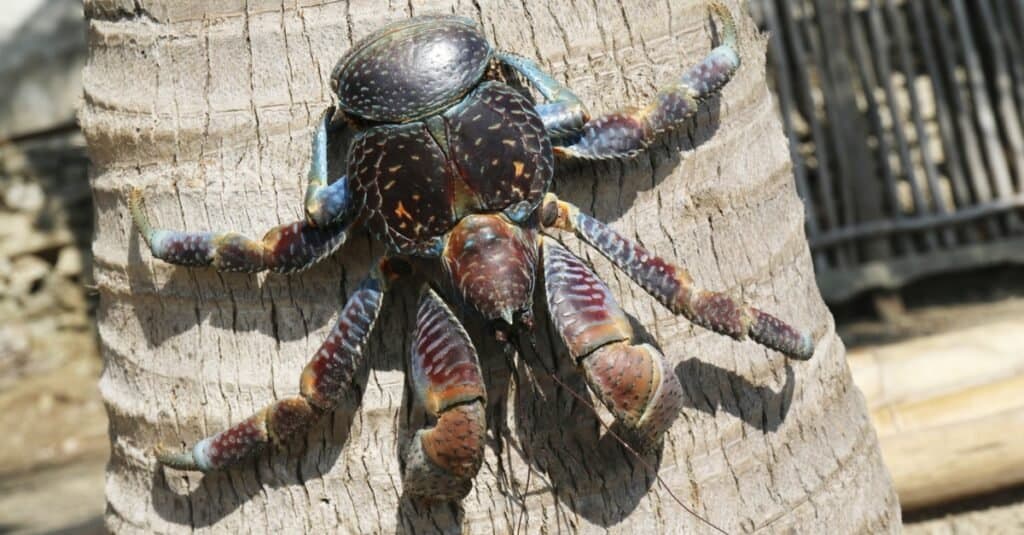
©KYTan/Shutterstock.com
Coconut crabs actually climb coconut trees. Coconut crabs then use their powerful claws to crack open a coconut to chow on the innards. Their pinchers can snap a finger off a hand. Coconut crabs molt their exoskeleton and eat them.
European Lobster

·
©davemhuntphotography/Shutterstock.com
The European lobster can live up to a century and will continue to grow the entire time. In its first five to seven years, the lobsters molt their exoskeleton somewhere around two dozen times. After, the adult lobster only molts no more than twice a year.
Crayfish
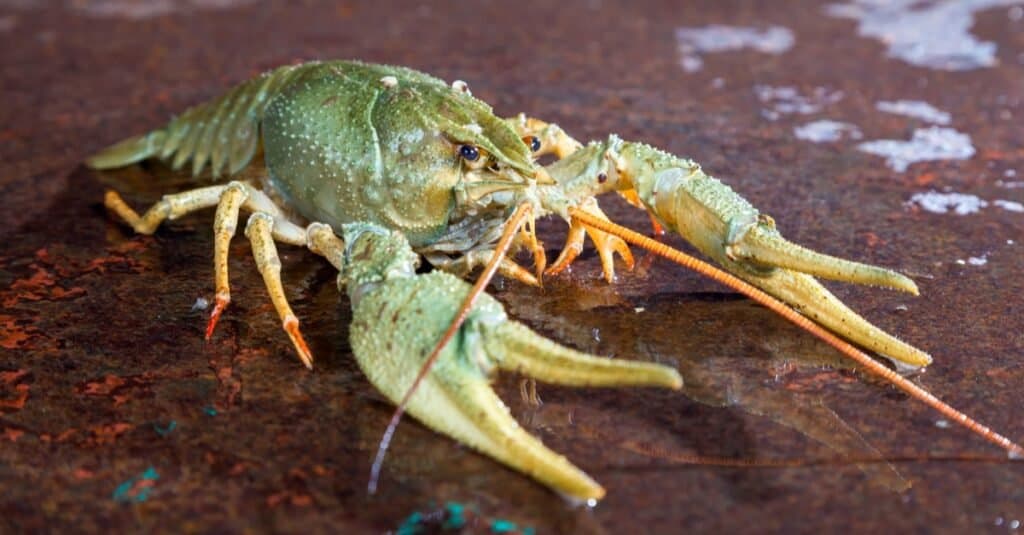
©Sergey Lavrentev/Shutterstock.com
Also known as crawdads, the crayfish is something of a mini lobster. They’re found in rivers, streams, creeks, and other bodies of fresh water. In order to grow, they molt their exoskeletons.
2. Insects
The largest group of arthropods on earth, insects have hard exoskeletons. Made of chitin, the skeleton supports and protects bodies comprised of a head, thorax, and abdomen.
Grasshopper
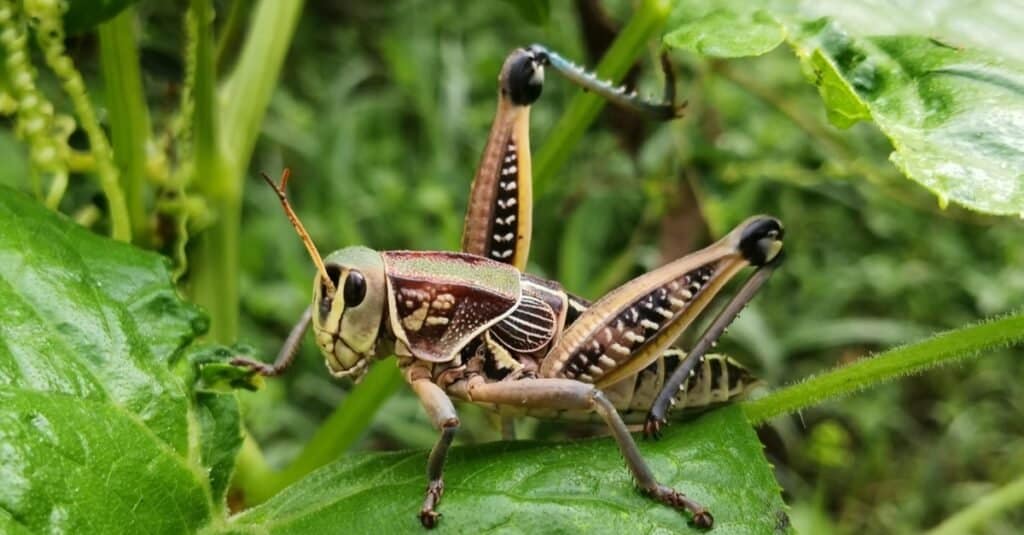
©NEFS/Shutterstock.com
Grasshoppers have hard exoskeletons to protect sensitive internal organs. Their large back legs let them jump significant distances. Some species of grasshopper can fly.
Cicada
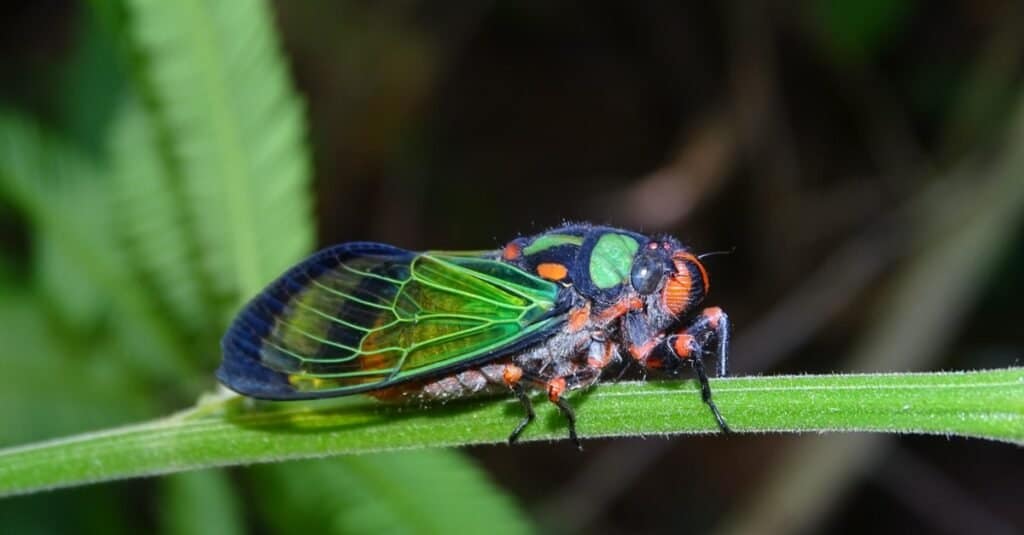
©Marcos Cesar Campis/Shutterstock.com
The cicada will live beneath the surface for up to the first 17 years of its life. Once it surfaces, the creature goes on a mission to shed its exoskeleton. Once they molt away the shell, they become adults and are now called nymphs.
Cicadas have prominent eyes set wide apart, short antennae, and membranous front wings. They have an exceptionally loud song, produced in most species by the rapid buckling and unbuckling of drumlike tymbals. They typically live in trees, feeding on watery sap from xylem tissue, and laying their eggs in a slit in the bark.
The exoskeleton remains attached to the tree they used to lose the external skeleton.
Ladybug

.
©iStock.com/sebastianosecondi
A ladybug‘s exoskeleton is a bright red with black dots. Their main function is safeguarding the creature’s wings. The wings are usually four times the size of the insect’s body. The exoskeleton also holds the ladybug’s body together pretty much the same way an endoskeleton functions with mammals.
3. Arachnids
Belonging to the arthropod group, the spider family is kin to mites, ticks, chiggers, and scorpions. They all have exoskeletons over a two-part body. That’s the abdomen and cephalothorax. Unlike an insect, the spider has no antennae. They all walk on eight legs.
Brown Recluse

©Physics_joe/Shutterstock.com
The name comes from the brown recluse’s leaning toward solitude. They are identifiable via a marking that’s violin-shaped at the top of its exoskeleton. The brown recluse bites only, is non-venomous, and their teeth are so small they don’t go through clothing.
Black Widow
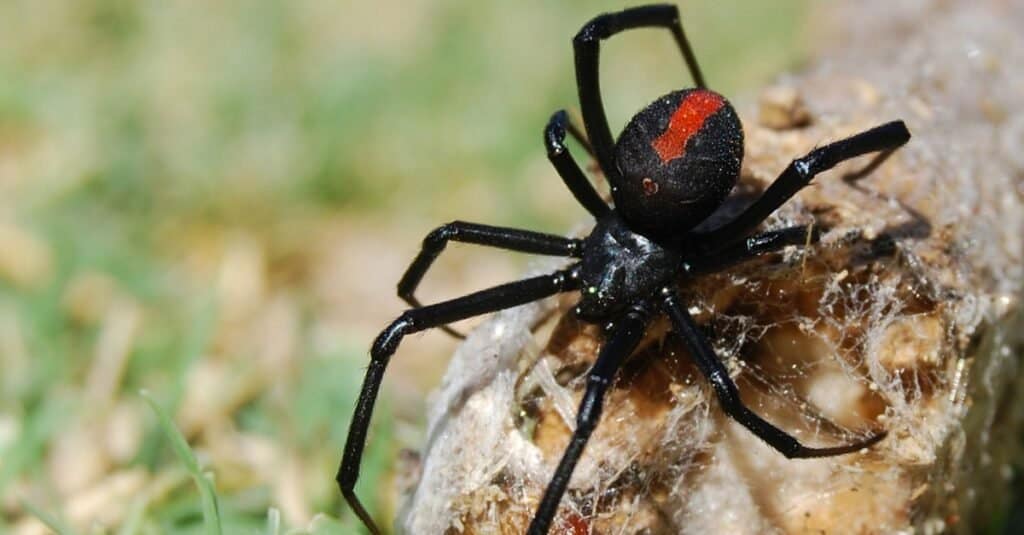
©iStock.com/maria72
One of the most lethal spiders in the world, black widows are infamous for consuming their mates after successful mating. Both males and females have tough exoskeletons consisting of chitin and protein.
Emperor Scorpion
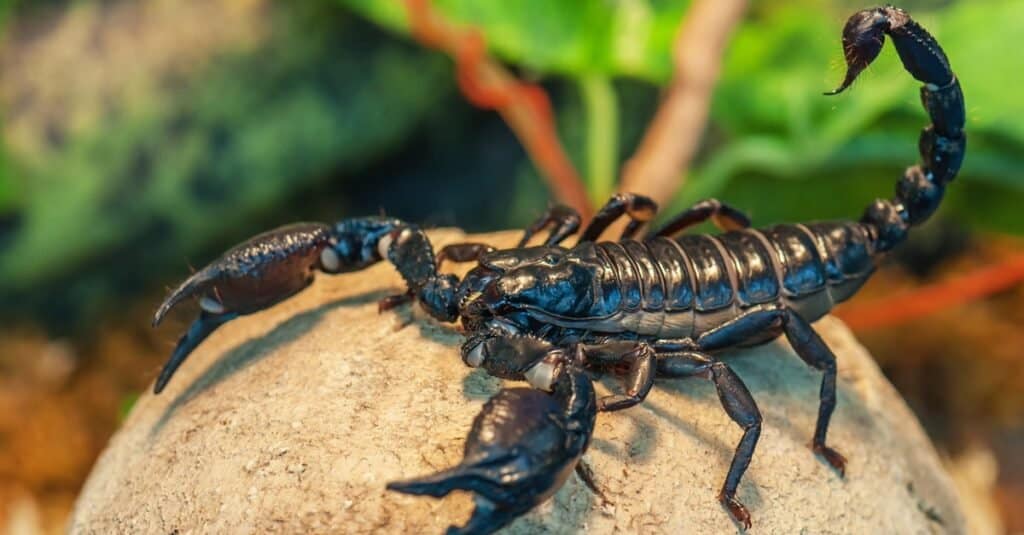
©Vova Shevchuk/Shutterstock.com
The emperor scorpion uses its rugged shell as an advantage to protect itself from predators. The scorpion has seriously intimidating stingers but relies more on its claws. Its sting is comparable to a bee sting, not particularly painful considering the stinger’s size.
4. Mollusks
Shelled mollusks fall into two groups: cephalopods and gastropods. Both groups have hard shell exoskeletons. The advantage of the shells is they serve as both protection and home. The exoskeleton is mostly made of calcium.
Snails
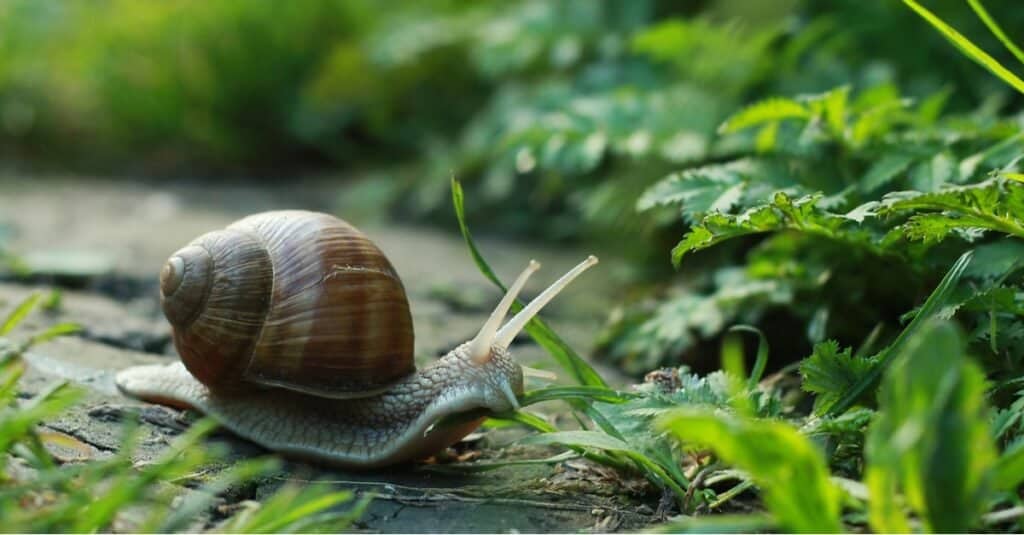
©Zuzha/Shutterstock.com
All forms of snails — from giant sea snails to garden versions — have an exoskeleton. Like all snails, the shells are a primary defense. They also act as a home. Creatures can go into the shell like a turtle and close up. Unlike many creatures with an exoskeleton, the snail shell grows with the animal.
Oysters and Clams

©wasanajai/Shutterstock.com
Many shelled animals are soft-skinned and the exoskeleton is the first line of defense for keeping them safe. We may only see clams and oysters as oily little slimers, but their systems actually consist of a heart, mouth, stomach, and nervous systems.
5. Centipedes and Millipedes
Getting the millipede and centipede confused isn’t uncommon. They are actually very different. What first distinguishes them is centipedes have one pair of legs per segment. The centipede only has one. Another major distinction is centipedes are venomous — some lethal — and millipedes are not.
Millipedes
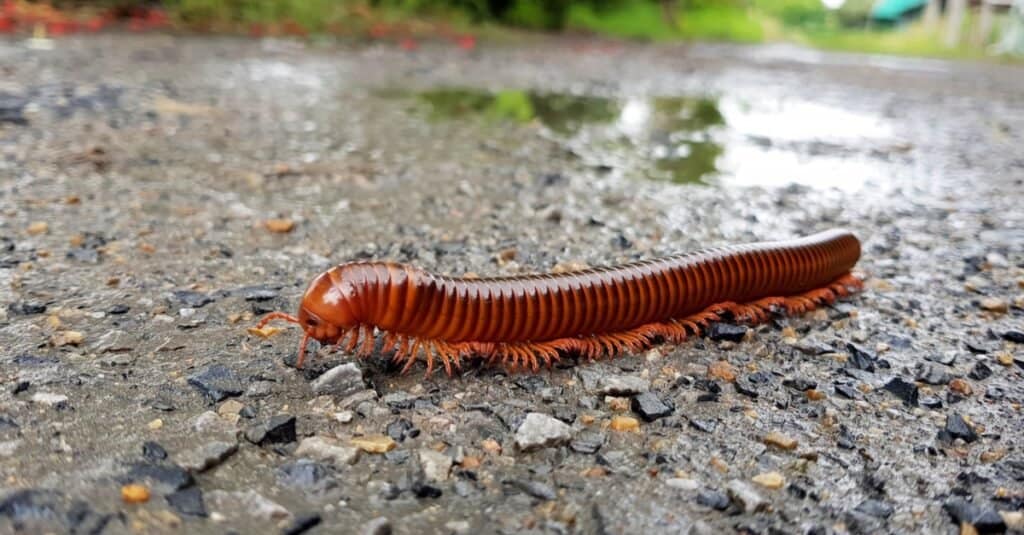
©Sawangkaew/Shutterstock.com
The exoskeleton on the millipede is its strongest defense from anything that would gladly eat it. When threatened, the insect balls into a coil. The action makes them less alluring and reinforces the advantages of the shell’s ability to safeguard their vulnerable underside.
Centipedes

©frank60/Shutterstock.com
Centipedes have the same protective casing as the millipede. The centipede has a venom it uses to kill its prey. The venom isn’t really fatal to humans though certain species — think the Asian Forest Centipede — can cause painful swelling. Typically though, the creatures avoid humans.
Summary of The top 5 groups of animals with an exoskeleton
| Rank | Group | Examples |
|---|---|---|
| 1 | Crustaceans | The coconut crab, Crayfish, European Lobster |
| 2 | Insects | Grasshopper, cicada, ladybug |
| 3 | Arachnids | mites, ticks, chiggers, and scorpions |
| 4 | Mollusk | Snail, oysters, clams |
| 5 | Myriapoda | Centipedes, millipedes |
Up Next…
- 10 Incredible Centipede Facts. Here are 10 incredible centipede facts that explore what makes this creepy crawlies so interesting.
- Discover the 10 Largest Scorpions In The World. Check out the interesting largest scorpions that exist!
- Insects vs Spiders: What Are the Differences? Spiders are eight-legged creatures that give many people creeps. However, they are not insects. Find out why in this article.
The photo featured at the top of this post is © Cyrus Matiga/Shutterstock.com
Thank you for reading! Have some feedback for us? Contact the AZ Animals editorial team.






